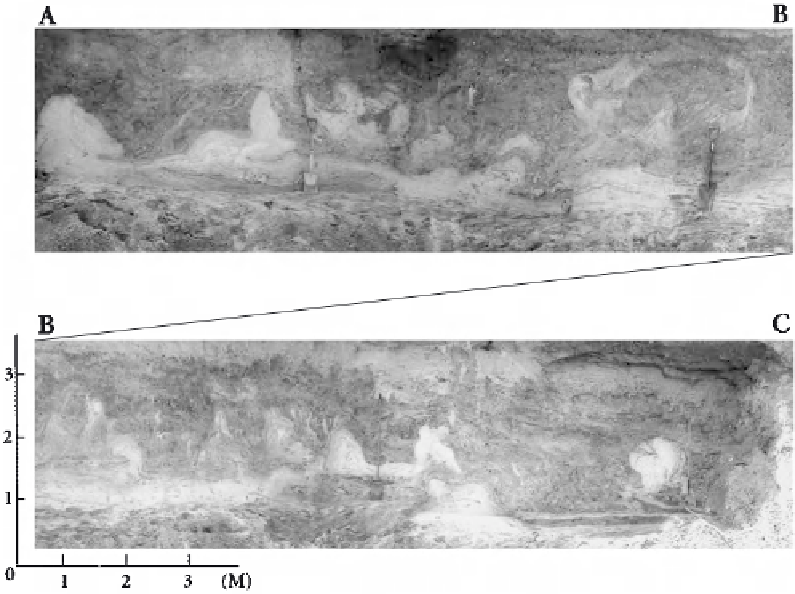Geology Reference
In-Depth Information
Figure 12.7.
Composite photograph of post-sedimentary deformation structures that involve over-
lying sandy gravel and underlying fi ne sand, Newtonville, Atlantic County, Southern New Jersey,
eastern USA. The fl ame structures indicate underlying sand has risen while overlying gravel has
descended. Several phases of activity are indicated. See French et al. (2005).
and density differences in water-saturated sediments, probably during the degradation
of underlying permafrost.
Irregular tongues of material that penetrate underlying sediment may also be explained
as the preferentially thaw-modifi ed remnants of ancient sand wedges and ice wedges.
These structures occur in proximity to an inferred ground surface. They defy simple gen-
eralization because they are irregular kettle-like structures that consist of chaotic assem-
blages of silt, sand, and gravel in which evidence of running water, erosion, slumping, and
mass displacement may all be present. As such, the sediments are quite different to those
of thermokarst lake-basin sedimentation (see Chapter 8). These collapse structures are
termed “sediment-fi lled pots” (Conant et al., 1976; French et al., 2005). Typically, they
may be 2-4 m in both vertical and horizontal dimensions (Figure 12.8A), and occasionally
are penetrated by wedge structures (see Figure 12.11B). Sediment-fi lled pots presumably
form at the intersection of two or more wedges by a combination of thermal erosion and
the mixing, slumping, and redeposition of material from both the wedges and the enclosing
sediments. The modern permafrost analogue is the “thaw sink” that occurs in tundra
lowlands in thin and/or discontinuous permafrost (Hopkins, 1949).
Sediment-fi lled pots, ice-wedge pseudomorphs, and degraded sand wedges are regarded
as entirely consistent with the nature of thermokarst activity and sedimentation. As
described in Chapter 8, fl uvio-thermal erosion operates preferentially along ice wedges
and other lines of weakness in present permafrost environments. Similar processes would

